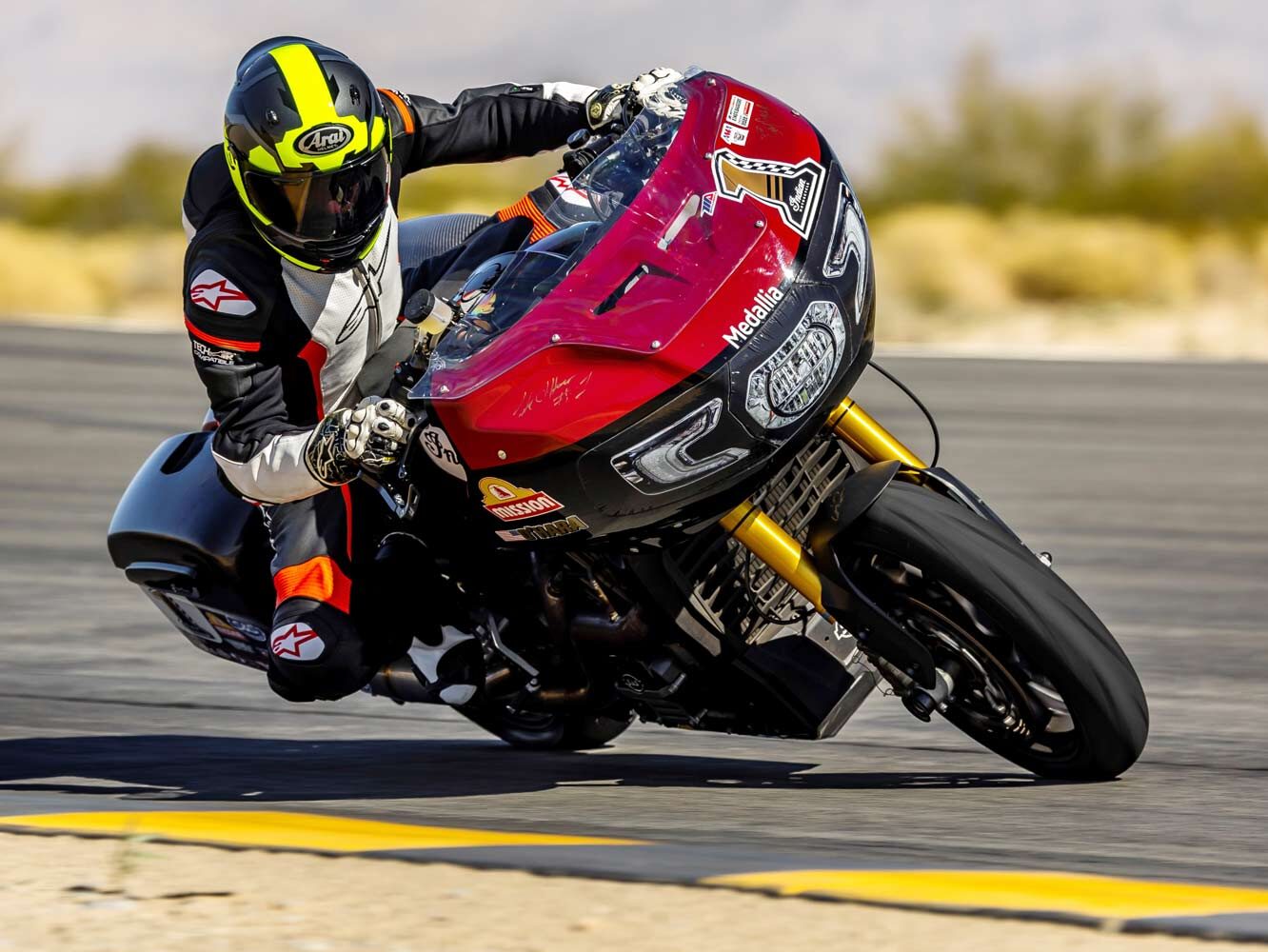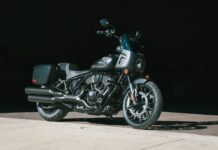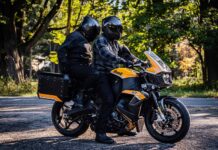This article was originally published in our April 2023 issue. Stay on top of all our latest articles by clicking the subscribe button, either for our digital issues ($15) or throw down $39 to have a printed copy sent to your door!
Like a kid brother to a more established sibling, Indian Motorcycle lives in the shadow of the Harley-Davidson juggernaut. Indian must claw for respect while Harley shines as the venerated player among American motorcycles.
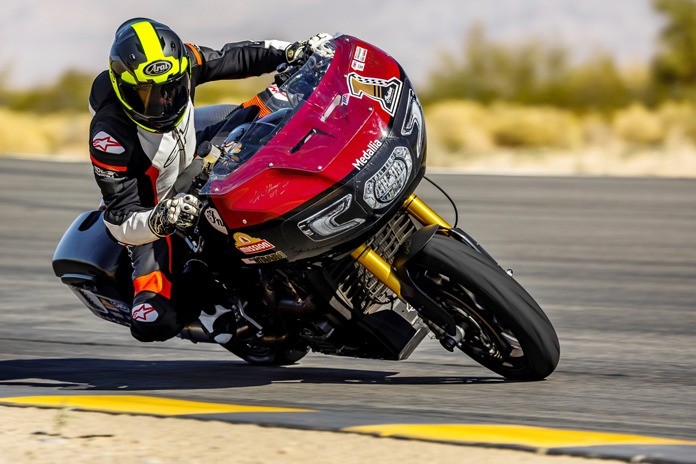
One way to earn admiration is to excel in various fields, and Indian had a 2022 race season to be envied. Indian’s three national championships must’ve felt like a poke in the eye to the MoCo.

Indian usurped H-D as the King Of The Baggers champ in the MotoAmerica series with star racer Tyler O’Hara, plus it won the Super Hooligan National Championship with an FTR. And thanks to the exploits of dirt-track legend Jared Mees, it earned its sixth consecutive American Flat Track championship. Indian’s Challenger was the only bike to finish every round of the KOTB series, and O’Hara locked up the title in the rain-soaked season finale race in New Jersey.
No other class in the MotoAmerica series enjoys factory involvement like the King Of The Baggers. Understandably, Harley-Davidson was chuffed that its racer Kyle Wyman earned the 2021 KOTB title, as Harley is the 900-lb gorilla of American motorcycle manufacturers and a brand known throughout the world for its baggers.

So when Indian was able to wrest the championship from the MoCo in 2022, it was a real triumph for the underdog team.
“The coolest thing for me,” O’Hara told us, “is that I’m representing an American motorcycle company. I get to represent the coolest brand there is in the industry. There’s a lot of pride, and I want to stay King Of The Baggers.”
To celebrate its achievements, Indian invited us to a trackday to sample a stock FTR and a pair of its title-winning racebikes.
Batter Up
The sportiest model in Indian’s lineup is the FTR, a roadster loosely based on a flat-tracker theme. It uses a radically hot-rodded Indian Scout motor that produces a claimed 120 hp. If you had to choose a stock Indian to take to a trackday, the FTR is the optimal choice.
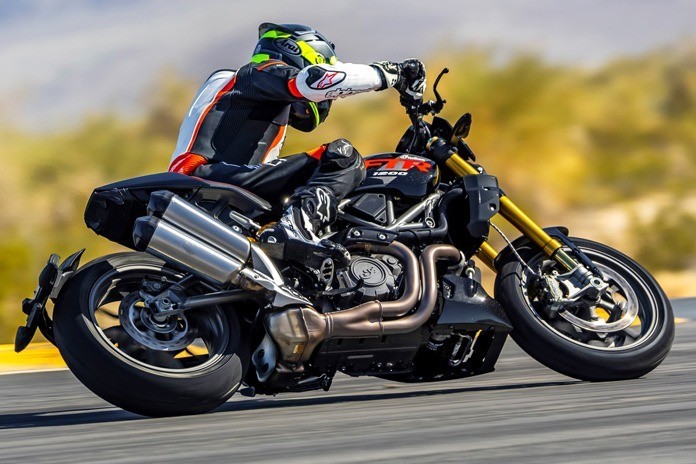
Indian made a significant change to the FTR a couple years ago, switching to 17-inch wheels from the 19/18-inch combo it had at its 2018 launch. The FTR loses a bit of its dirt-track roots in favor of tire sizes better suited to carving apexes – particularly at the sinuous Chuckwalla Valley Raceway.
New this year is the FTR Sport, which includes a flyscreen, a chin fairing, and a seat cowl, and it’s priced from $15,749. For 2023, all four FTR models receive new mufflers, a new clutch, and a revised front braking system. The FTR Rally retains the 19/18-inch wheels.
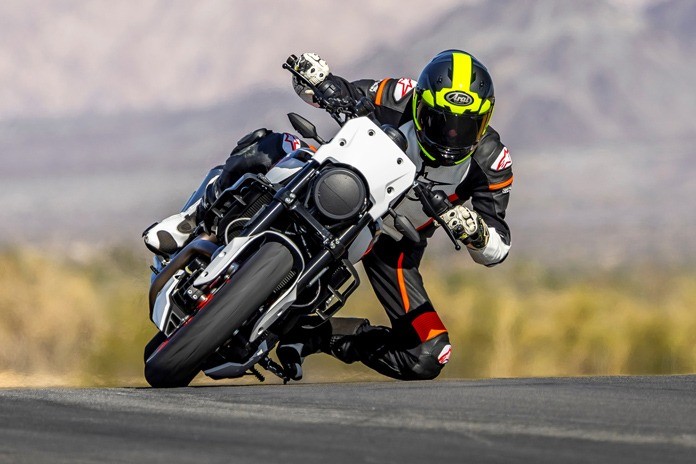
The FTR’s 73.4ci (1,203cc) V-Twin with cylinders splayed 60 degrees apart offers plenty of grunt to drag the 508-lb FTR around the track with alacrity, blessed with a wonderfully wide powerband. The sportier geometry offered by the smaller wheels aids the FTR’s agility while the relatively long 60-inch wheelbase keeps the chassis stable.
Fast riders will scrape pegs when hustling around corners. Only racers will feel the need for better brakes than the FTR’s potent Brembo system that includes ABS.
The FTR proved to be an exceptionally friendly mount for a cruiser rider transitioning to trackdays. It’s a hoot to ride on a racetrack, and it set the table perfectly for the next bike in line.
Hool-Again
Roland Sands has a long history of racing, so it made perfect sense to take Indian’s FTR and transform it into a speedy racer fit for his Super Hooligan National Championship. The result is a machine that won three of four races in 2022, netting Tyler O’Hara his second of two titles in 2022.
The SHNC is perhaps the most interesting class in the MotoAmerica racing series. Rules are purposefully vague to open up the class to a variety of twin-cylinder bikes that were originally produced as high-bar streetbikes. They must use stock frames and have no bodywork. Minimum displacement is 750cc, maximum horsepower is 125, and the bikes can’t weigh less than 397 lb. Oh, and for added spice, electric motorcycles are also eligible.
Sands said he noticed a gap of motorcycle enthusiasts who weren’t doing anything in roadracing, so the SHNC bundles together a variety of bikes that are competitive with each other.
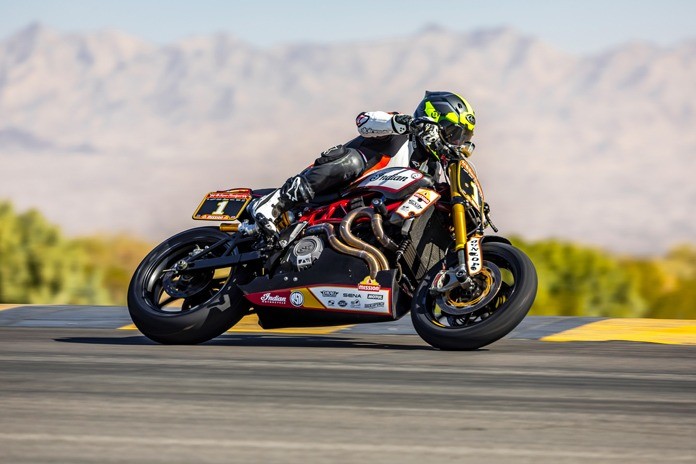
“Harley versus Indian, air-cooled versus water-cooled, electric versus ICE – I want to leave it that way because I want to try everything out,” Sands told us.
Racing against the FTRs in 2022 were KTM 890 Dukes, a few Harleys, a BMW R nineT, a Ducati, and electrics from Energica and Zero Motorcycles. For 2023, the series is allowing the Revolution Max-powered Pan America into the class, but it must use the more restrictive airbox of the Sportster S to keep a lid on its power.
“It gets interesting to see different styles of bikes going around the track racing together,” Sands enthused. “The platform is there for these guys to race their best-selling bikes.”
The Roland Sands Design FTR looks menacing sitting on its stands in the pits, but its exhaust note is positively demonic. It raps and barks and thunders through its SC-Project exhaust. The only other motor mods are new camshafts and a less restrictive airbox for better breathing at high revs. The frame is stock, as per the rules, but the bike uses a C&J swingarm for better handling. Suspension is by Öhlins, supposedly the stock items from the FTR R Carbon model but assuredly modified from the streetbike.
It requires a big swing of the leg to get over the FTR’s Saddlemen seat and tailsection, as the chassis has been jacked up to provide additional cornering clearance at extreme lean angles. Team manager Cameron Brewer set me off for my hot laps, reminding me about the inverse shift pattern from stock – what was an upshift became a downshift and vice versa. I tried not to think about the time I blew up a Buell motor during a race when trying to upshift but mistakenly downshifted…
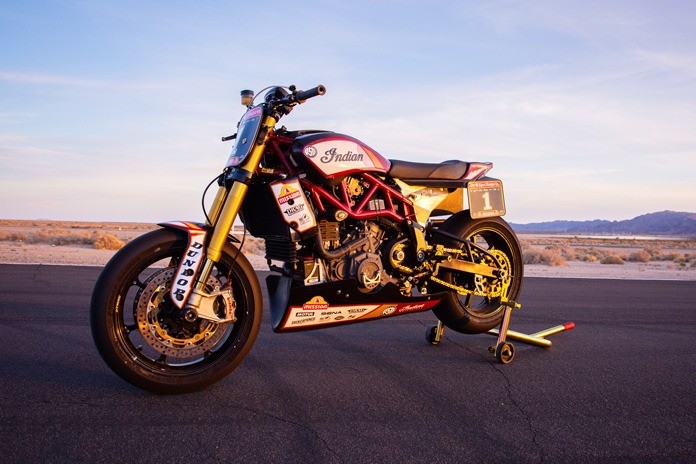
The RSD FTR immediately feels like a much racier bike than the streetable FTR. It’s much more tossable and sharper-handling than the streetbike, and a lower Pro Taper handlebar and rear-set footpegs draw a tighter ergonomic triangle that’s better suited for the racetrack. The SHNC minimum weight in 2022 was 420 lb, which is about 90 lb less than a stock FTR, but some credit for the newfound agility also belongs to the forged Dymag wheels that reduce gyroscopic forces and unsprung weight. A steering damper curtails any flightiness.
Although based on a proper streetbike, RSD’s FTR scampered around the track like a veritable racer. The FTR’s enviable torque curve remained intact, but the hotter cams created a stronger top-end lunge – it’s gotta be up at least 20 horses on the stock bike. The motor belts out a malevolent exhaust cacophony exiting every corner, and it cackles a wicked bark during downshifts. Upshifts and auto-blipping downshifts were clicked off without using the clutch thanks to an IRC quickshifter. And yes, I remembered to shift it in the proper directions.
I had no issues with the FTR’s stock brakes, but the Brembo units on the RSD bike operate at a much higher level – responses were superb and ferocious. Unlike the stock FTR, the higher pegs of this FTR never got scuffed despite the grip from the Dunlop Q4s. If it were my bike, I’d swap the flat seat for one with a prominent bum stop to help keep me in place during hard acceleration.
I had so much fun during my session that it was over before I approached the machine’s limits and long before I was ready. It’s a legitimate ripper.
Bagging the Main Target
The concept of roadracing bagger motorcycles puzzles many people. Indian entered the inaugural KOTB race in 2020 as a bit of a lark.
“We didn’t know what it would be at that time,” Indian’s vice president of racing, service, and technology, Gary Gray, related. “There was a lot of us, me included, who kinda laughed at it and said it was going to be silly but it was going to be fun, so let’s go do it. A week later, we had 1 million views on YouTube and said, ‘Wow, this is amazing. This is real.’ This is like what NASCAR was at its initiation where you’re taking real cars off the assembly line and modding them to be safe and fast.”
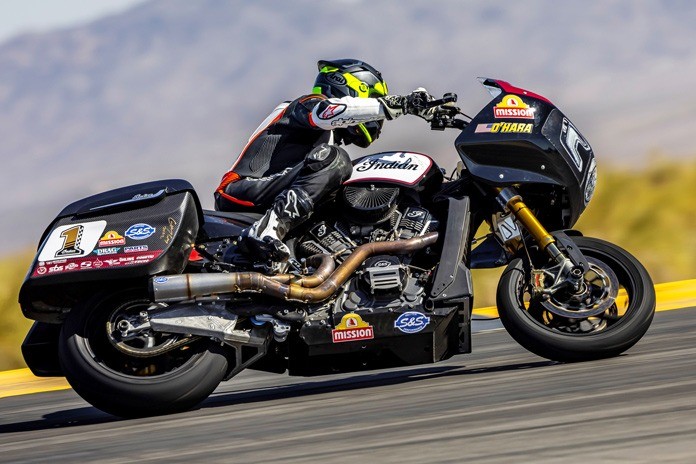
The KOTB championship has risen in importance for Indian beyond even the Progressive Insurance American Flat Track series.
Related: Progressive AFT Finale Springfield Mile I and II Results: Mees Makes it Nine!
“Today, baggers are dominating sales,” Gray noted, “so why not race what people are buying? We’re generating hundreds of millions of impressions every year, and on YouTube, we’re fourth in terms of engagement behind Formula 1, MotoGP, and NASCAR – we’re even ahead of Supercross!”
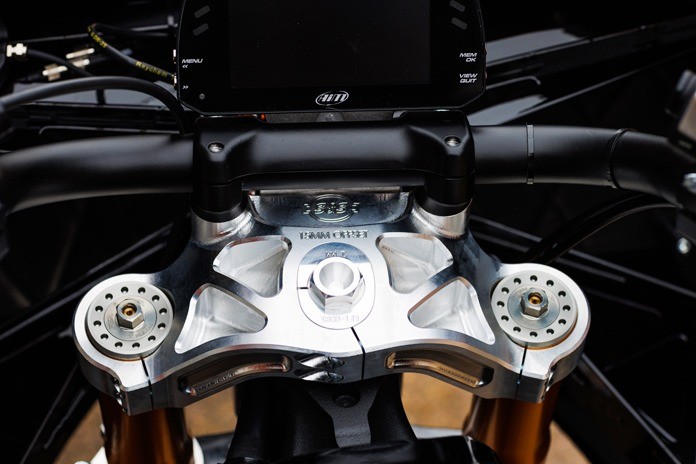
Things weren’t looking good for Indian when the 2021 season ended. Down on power compared to Harley’s factory Road Glides with 131ci powerplants, the liquid-cooled 112ci Indians couldn’t keep pace. But Indian, along with partner S&S Cycle, discovered the Challenger’s through-the-frame airbox was restricting airflow. It switched to a freer-breathing side-draft design before the season began, enabling an “unbelievably large” gain in power, according to Gray.
Related: King Of The Baggers at Laguna Seca: Corkscrew Clash
“It made us competitive,” Gray underlined. “We were so underpowered at the end of the 2021 season, but we shocked everyone at Daytona with a 1-2-3 finish.”

Riding a factory racer of any type is intimidating, but riding one with a seat so high that I couldn’t touch the ground added to the trepidation – just like my ride last year on Harley’s championship-winning Road Glide. And once again I needed to adapt to the inverse “GP shift” format of changing gears.
I clambered aboard O’Hara’s Indian Challenger in the hot pits while it was on its rear-wheel stand, and a crew member held the bike upright while another mechanic disengaged the stand. Then I was off on the King Of The Baggers for a memorable romp.
First impressions were that this bike is impossibly agile for a gigantic bagger. It actually steered quicker than the stock FTR, a bike more than 100 lb lighter than the Indian Challenger’s 620-lb minimum weight for the class. Gray has been lobbying MotoAmerica for a 600-lb weight minimum.
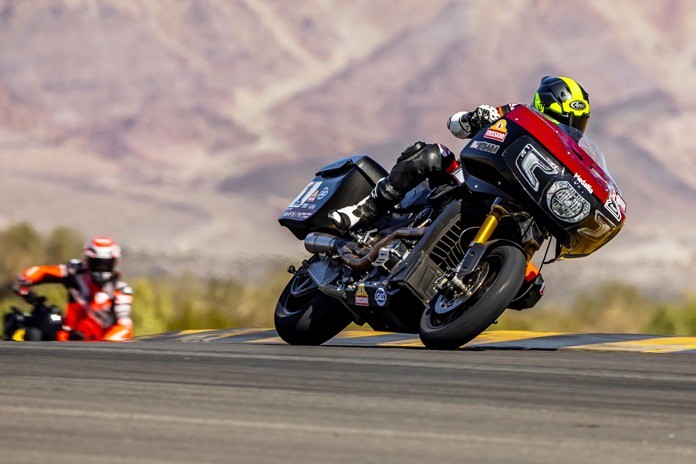
“Every year we want to go lighter,” he said, “but [the weight limit] doesn’t go lighter, so I suppose you can draw your own conclusions about that.”
Only a few corners into my lap, I felt an uneasy weaving feeling when the bike was leaned over in the corners. I initially thought it might’ve been a loose axle or low tire pressures, but then I remembered what Indian test rider and engineer Kyle Ohnsorg told me the day before my ride. He cautioned that I may experience a weaving sensation while cornering aggressively. It’s a condition O’Hara has learned to ride around.
“Some tracks are worse than others,” O’Hara downplayed. “We’ve learned to adapt to the bike that we have.”

O’Hara believes the cause might be in the bike’s wheels. He said Core Moto wheels, also used on Harley’s racebikes, are much stiffer than other wheels, and after testing them on his 2023 bike, he says the added stiffness “really does help a lot.”
To become the king of the baggers, O’Hara bravely rides through the disconcerting feedback. My bravery levels aren’t nearly as high, but I did begin to trust that the bike would hold its line without tossing me into the desert weeds. As my confidence grew, so did my grin.
Power, as you can imagine from a beast that can barge its way past 170 mph, is abundant. S&S has done a masterful job in tuning the motor, delivering smoothly brutal power at all points in the rev range, all the way up to 7,700 rpm. Indian played coy when asked how much power its engine produces, citing with a smile the same “more than 150 hp” Harley demurely claimed for its Road Glide last year. It wouldn’t surprise me to learn the Indian Challenger spits out more than 170 ponies.
Related: 2023 King Of The Baggers Championship Finale
The Challenger’s transmission shifts gears with far more fluidity than the balky ’box in Harley’s Road Glide, and it is further smoothed by an up/down quickshifter the 2021 Harley didn’t have. Braking is another strong point, using a pair of radial Brembos up front. O’Hara told us the rear brake is critical to bleeding speed on a long, heavy bagger, and his Indian Challenger uses a massive disc and a radial-mount Hayes caliper that can be actuated by foot pedal or a trick thumb lever on the left grip.
The bellowing of the Indian Challenger calmed down as the checkered flag flew over my session. I was invigorated and exhausted. I was thrilled, and I was terrified. I felt like a hero and a chump. And I wanted to do it again.

If you’d like to try one out for yourself, Indian just announced that it will be offering 29 race-ready replicas to the public (see page 4). Racers and collectors can order up a KOTB Indian Challenger RR if they’ve got $92,229 to spend on the raciest bagger in the world.
For O’Hara and teammate Jeremy McWilliams, they will keep searching for speed while battling H-D for racetrack supremacy.
“We don’t stop thinking about how we can make the bikes better,” O’Hara told us. “As far as direction and development, [McWilliams] is a big part of that. He knows more than me, and I take advantage of that – curious and learning.”
The factory racer pairing will be joined on the KOTB grid by another Indian duo. The RSD team will field KOTB race-winner Bobby Fong and Kyle Ohnsorg on Indian Challengers, as well as on FTRs for the SHNC.
O’Hara says he’s hungry for another championship, and this year he’ll enjoy the wealth of experience offered by ace mechanic Al Ludington, who joins the team as crew chief.
“I’m going to ride the wave as long as I can,” O’Hara said.
Unfortunately, O’Hara and the Indian team struggled during the 2023 season and finished behind the Harley-Davidson Screamin’ Eagle Road Glides of Hayden Gillim, James Rispoli, and arch-rival Kyle Wyman. Indian is hoping for a turnaround for the 2024 season.
Find all of American Rider‘s racing coverage here


